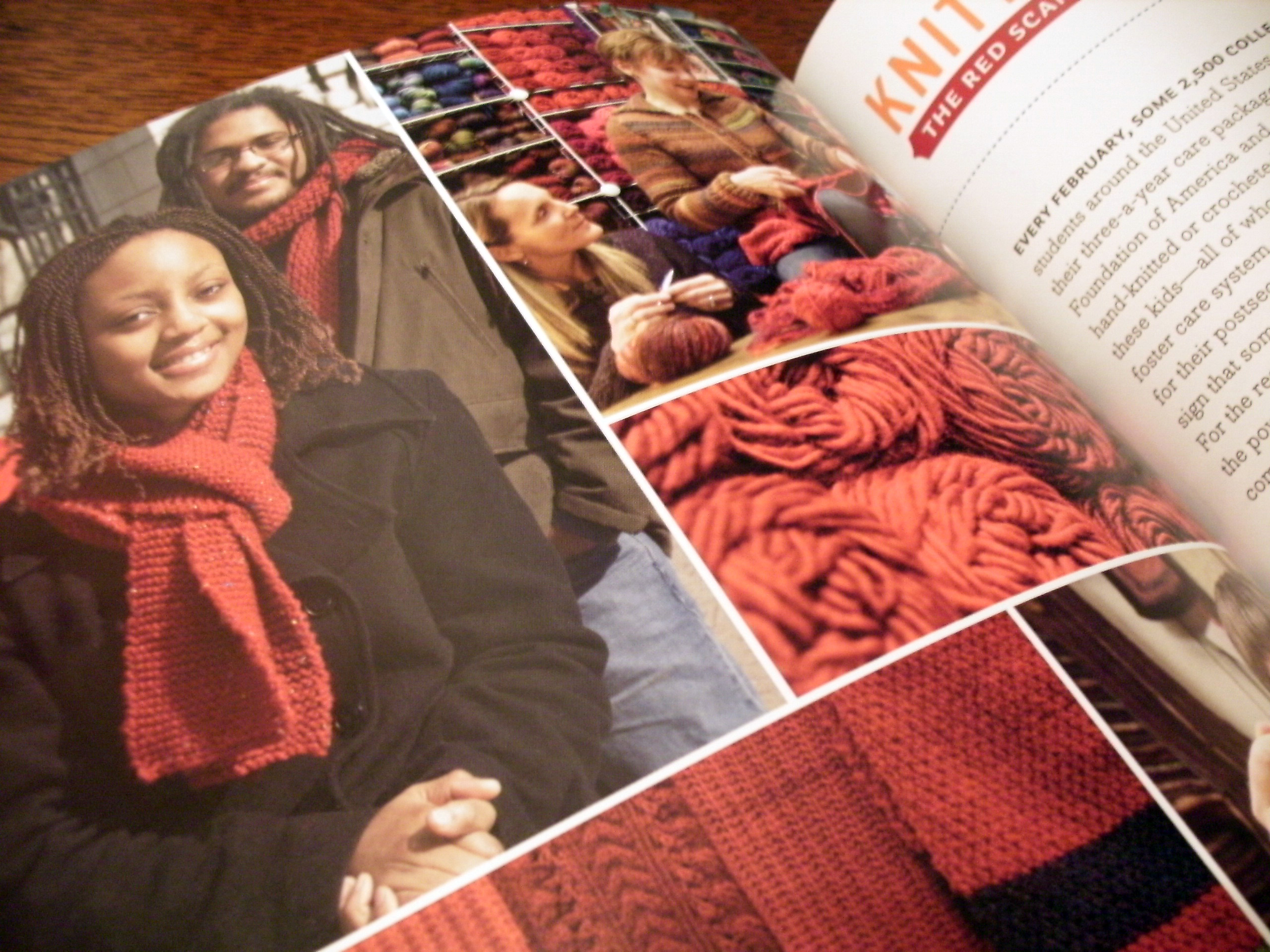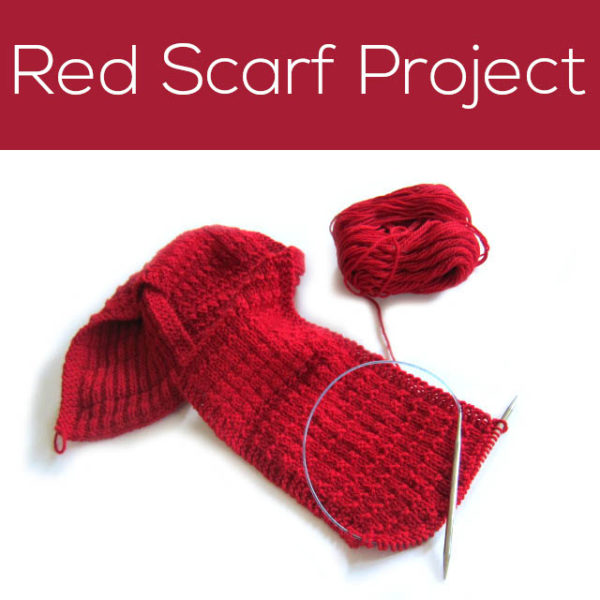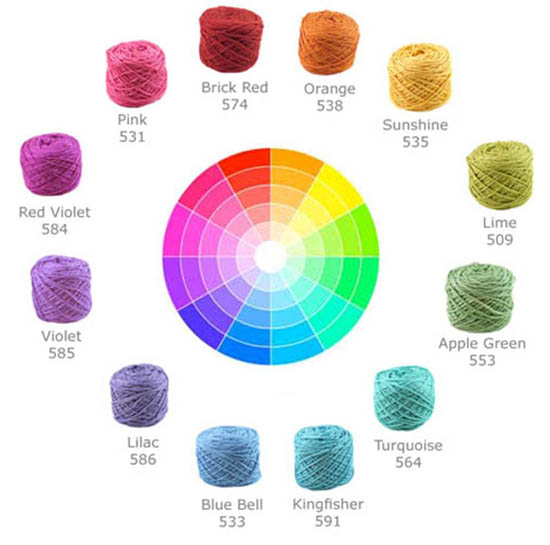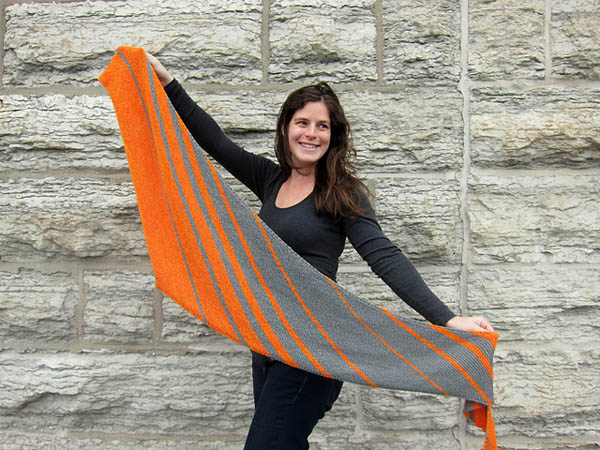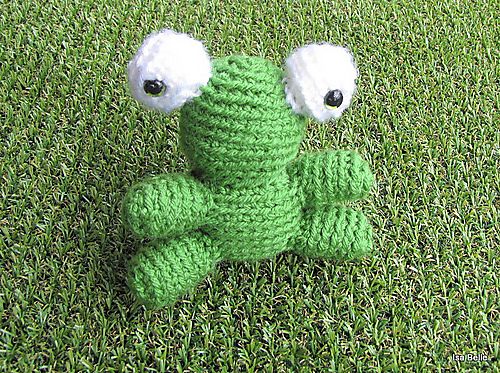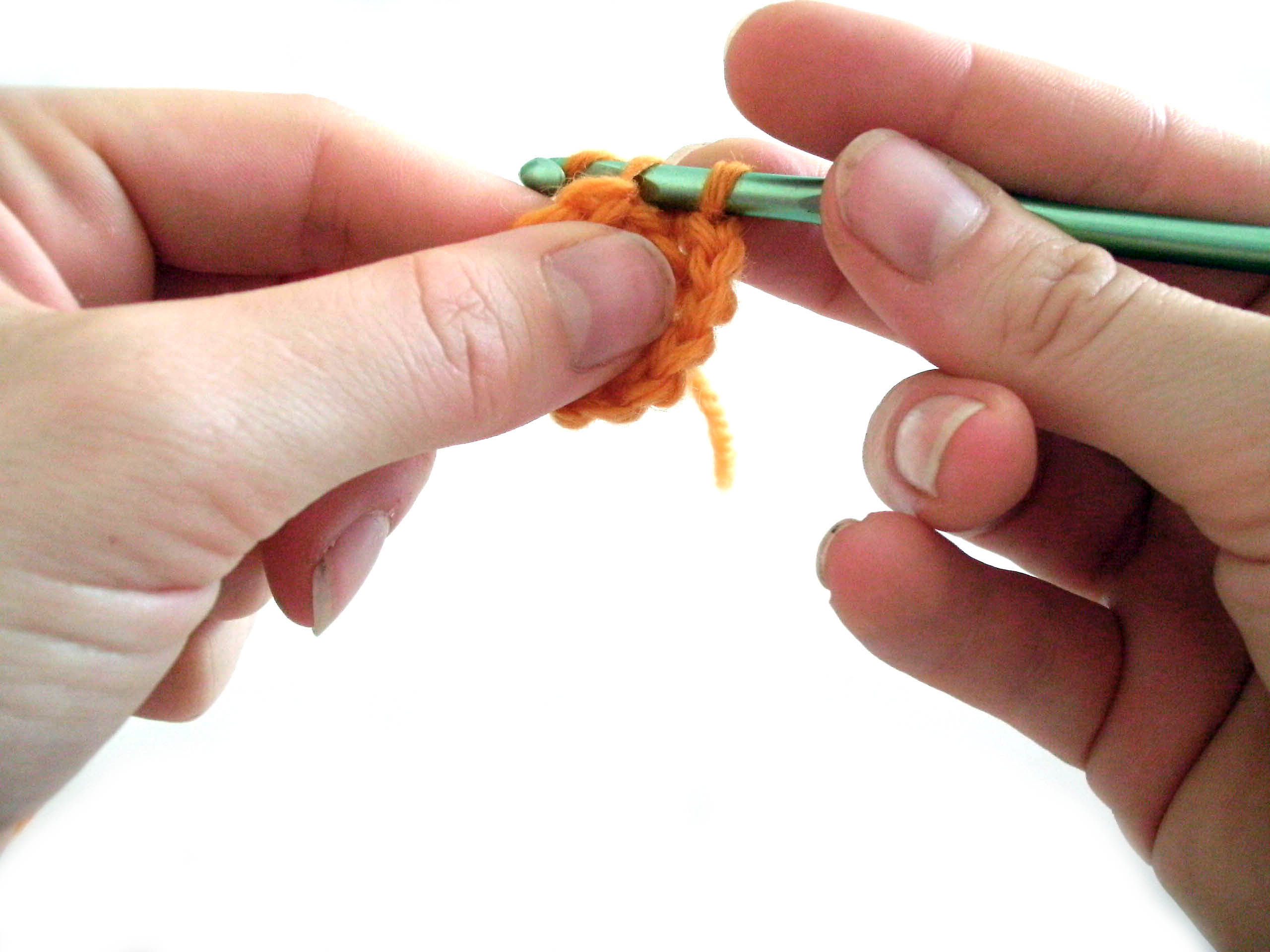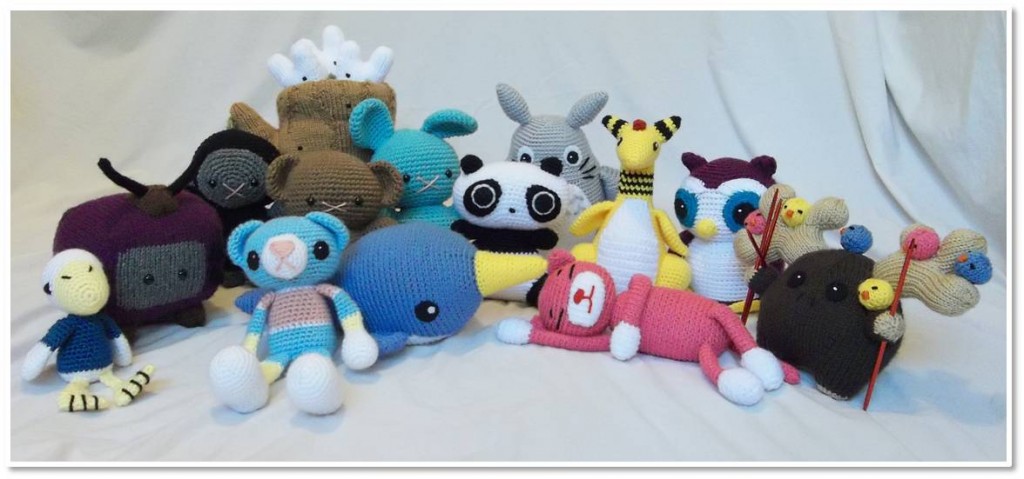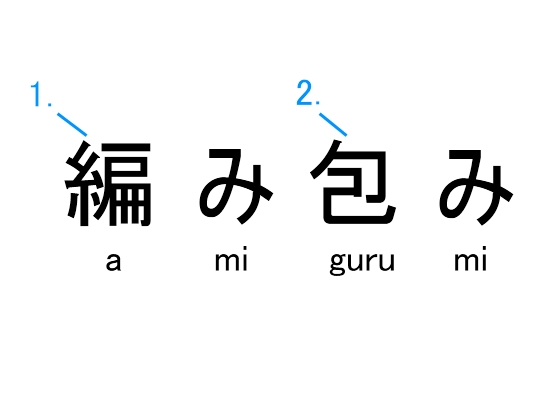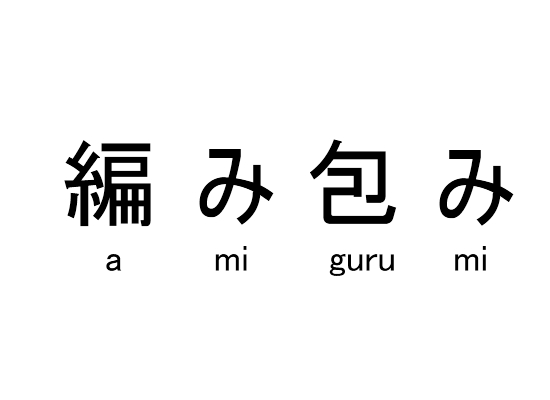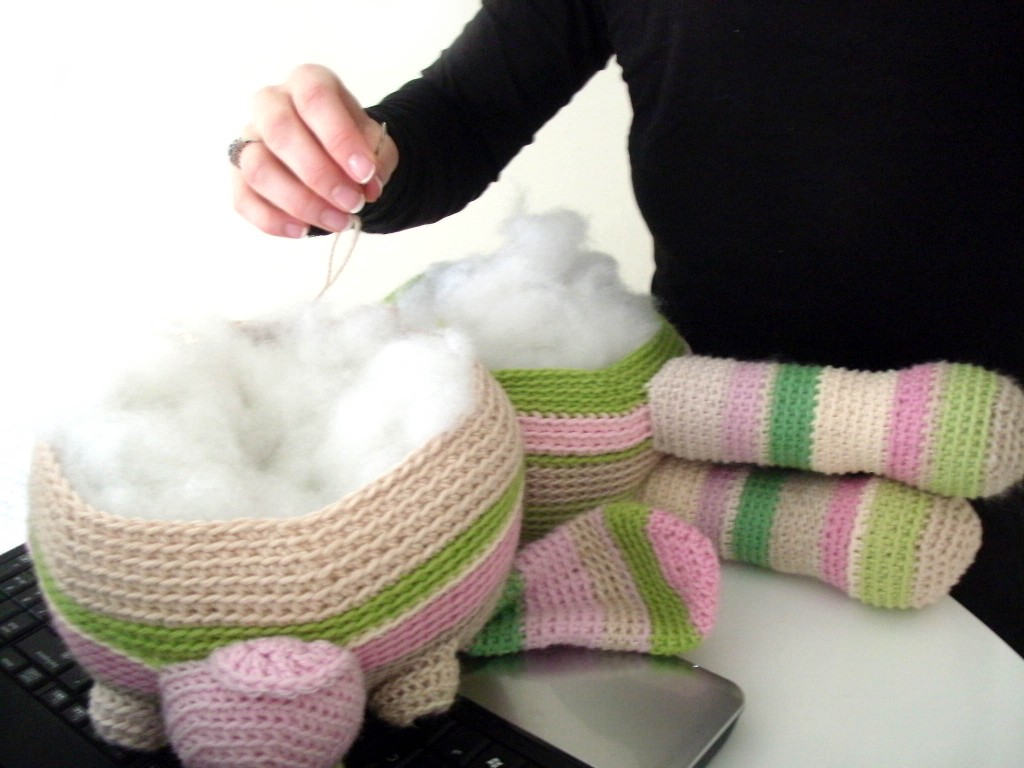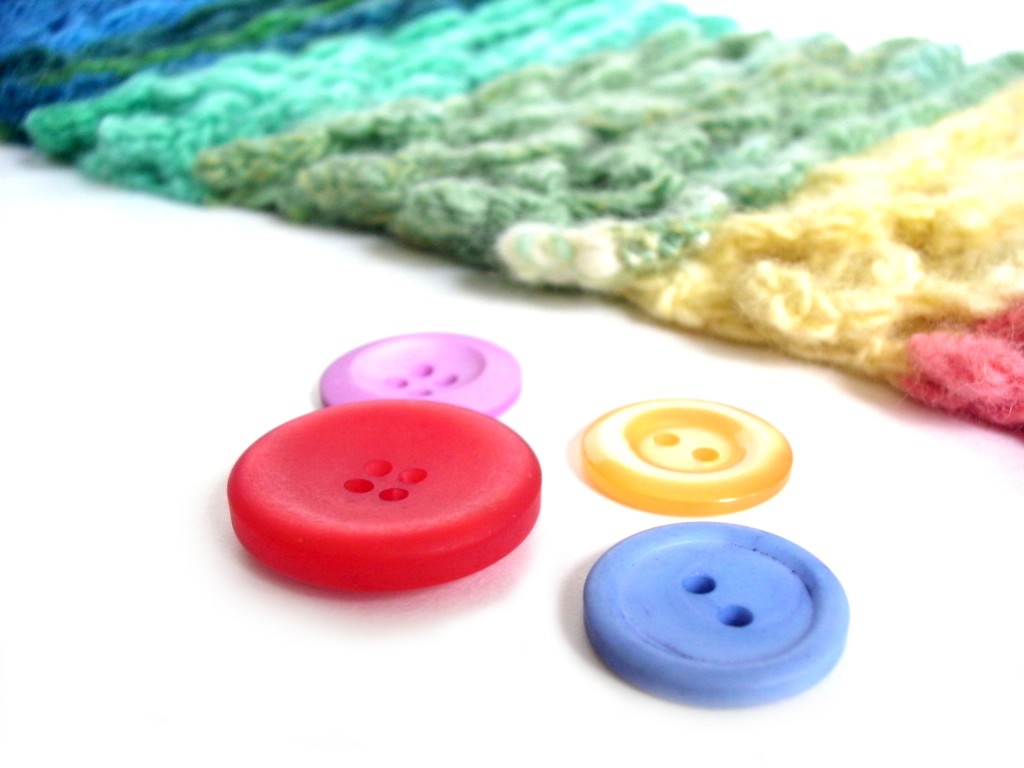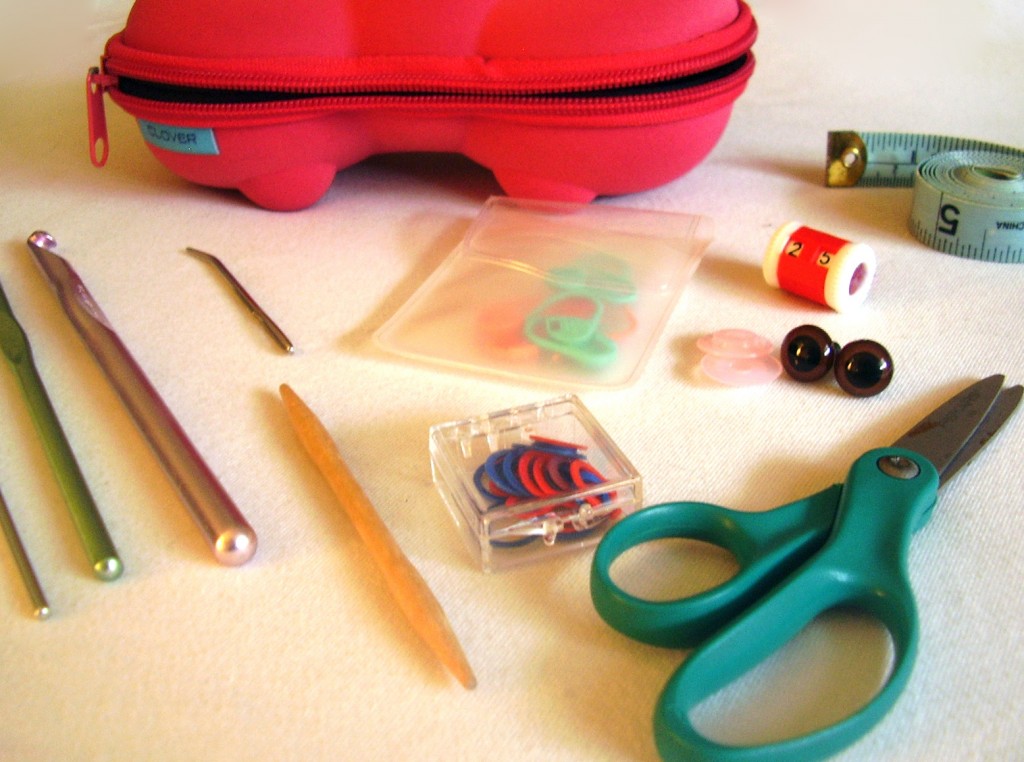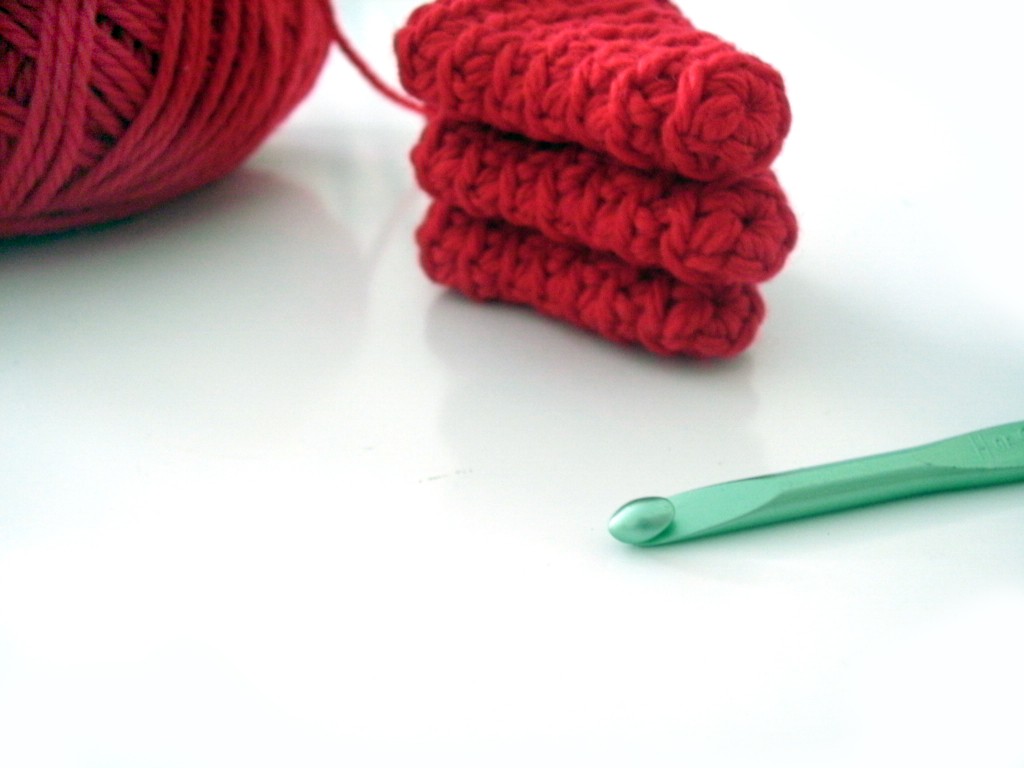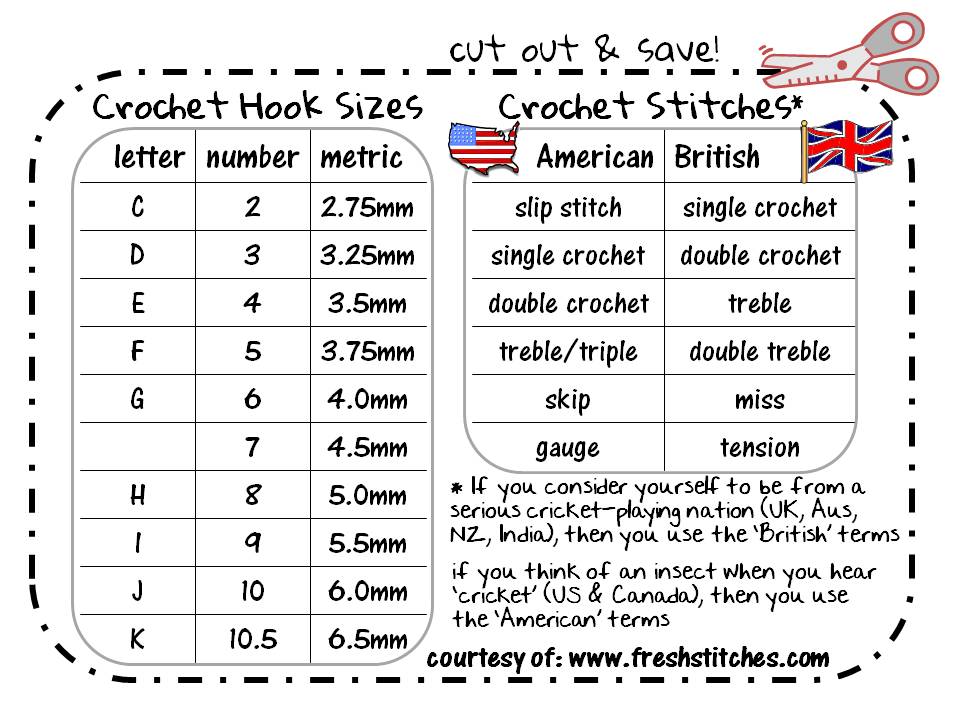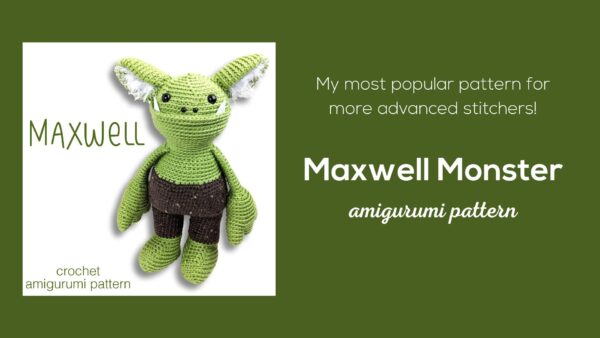If you’ve been on Ravelry or Pinterest, you’ve probably seen Heidi Bears‘s gorgeous stuffed animals! She creates totally unique designs using the African Flower Motif.
I’ve been a fan and I’m thrilled that Heidi agreed to come over and have a chat with us!

Hippo by Ravelry user, MissWorld
Interview
Stacey: I have to say, your concept of putting the African Flower Hexagon together to make animals is absolutely stunning! When did you first get the idea to experiment with the technique?
Heidi: Thanks Stacey! I think it came about as I was fiddling around with the basic hexagon pattern to see if I could make a pentagon and other polygonal shapes. Some of these were quite different in 3D shape to the hexagon, and while sitting in my kitchen one day, I thought, “Hmmm…. what if I combine this polygon with this polygon, maybe I can make it look like something…”
This led to an enormous amount of testing, crocheting, frogging, re-testing until I finally put together the pattern for Lollo Bear. I had spent several years as a Teddy Bear pattern designer and maker, which I think helped with the ability to “see” how different parts would fit together. Naturally (since I love and collect artist bears), my first design idea was for a teddy bear.
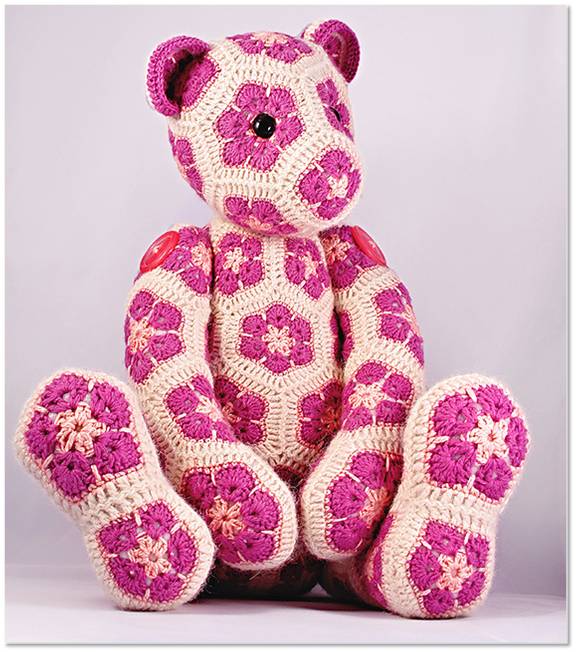
From the time I released Lollo Bear, my day job started demanding much more time, so my designing took a back seat. At the beginning of 2013, I had the opportunity to take a break from my regular job and concentrate solely on designing. At that point the kinds of items made from crochet motifs, seemed to consist of bags, blankets, scarfs and hats with the odd clothing item thrown in.
With so many amazingly talented people in the designing world, it can be extremely hard to produce something completely different, unusual and original when trying to establish a name for oneself as a designer. With the background I had in writing the pattern for Lollo, it appeared that there was nothing else on the Internet that I could find that was similar to my motif toys idea, in my style, so I decided to try and pursue that avenue.
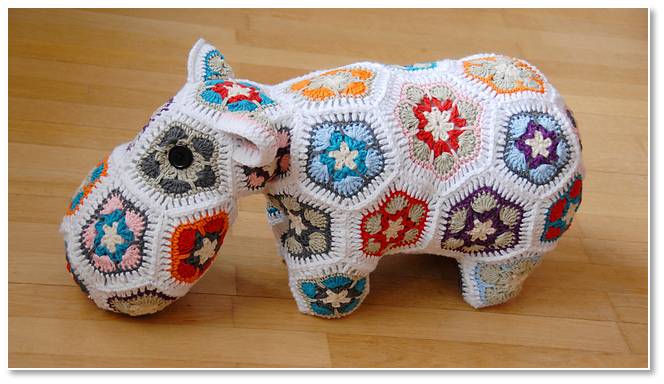
Hippo from Ravelry user, SteffiFalunIt took me several months to put together the pattern for Happypotamus, but during this time I learned a lot about polygons and how they act and what works and what doesn’t when putting them together. I like designing toys as they are smallish projects and when made well, appeal to both child and adult alike. I will branch out into other kinds of items when the time comes, but at the moment I still love thinking up ideas for animals, so until that well of inspiration runs dry, toys are it!
Your style is certainly unique… I can’t picture anyone doing a better job of creating an original design niche! What attracted you to the African Flower pattern over other motifs?
I love symmetry and balance in design. I can’t stand seeing a skew picture or lamps that are not symmetrical…the flower is both pretty and appeals to my love for symmetry…
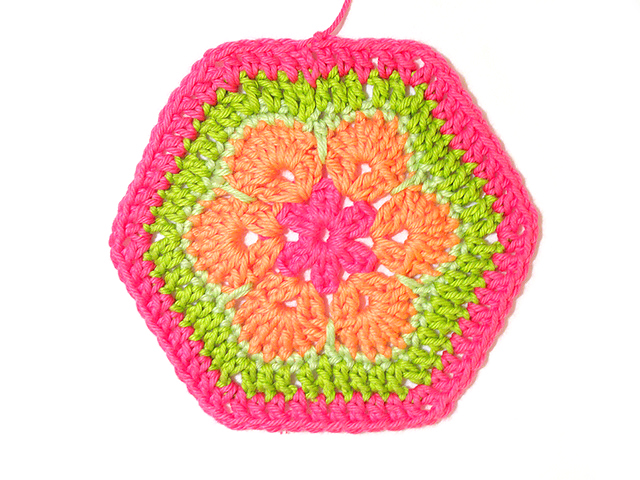
Were you nervous about taking the step of writing up the instructions? I mean, it’s a lot of steps!
Absolutely! My previous profession had nothing to do with my current work, so I had no experience in writing a crochet pattern… I pretty much winged it, hoping more than anything, that I hadn’t left any important bits out.

My goal was to provide a really detailed newbie’s guide to making Lollo, and from the feedback I have received over the years, it seems to have done the trick. However, I have since developed a much more streamlined approach, which, although it still has all the detail a crocheter may need, doesn’t run to such a big pattern anymore!
Can you tell us a bit about the yarn culture in South Africa? Is crocheting and knitting popular? What are yarn stores like?
Yes, knitting and crocheting are very popular here! Over the last few years, we have seen a wonderful increase in local indie dyers providing us with gorgeous and affordable natural fibre yarns that come in a much bigger range of colors than can sometimes be found in retail lines. I use yarns from two amazingly talented and lovely ladies, who use local merino and other fibres to dye up the full range of colors you see in my animals.
Similarly, there are more “indie” yarn shops popping up. There are a couple of traditional LYS too, but the growth has certainly been in the online indie shops!
I know that you’re also a sock knitter… what’s your favorite method for knitting socks?
Definitely toe-up two-at-a-time with a short row type heel.

My favourite is the Sherman heel… hides any holes perfectly! I am experimenting with all kinds of new heels and toes (just for fun), but knitting them in baby sized socks. They are from a wonderful new ebook teaching just that.. sock anatomy and all the variations you can get for heels and toes… learning is growing, so I like to keep trying new techniques!
Tell us a bit about yourself! Hobbies? Family? Pets?
Well, I am very happily married to the most awesome guy… we’ve been married for 20 years and are still best friends. We live in beautiful South Africa. We have two lovely (and adored!) girls and a pitbull, who is, if the truth be told, is more like a cat in many ways. Likes his comforts, worships the girls and gets spoiled waaaay too much.
I love learning new things and over the years have tried pretty much all the different types of hobbies you can find… I quilt, sew, paint, knit, lampwork, make stained glass… at one stage I ran a photographic studio and at one time even tried my hand at carving full sizes rocking horses! I am terrified of being bored, so I like to have loads of stuff on the go at the same time. I love the color pink, use only natural fibre yarns and have a stash that is shameful (except I can claim I neeeeed all that yarn for my work 😉 ).
I hear you… I’m a bit the same way with hobbies! Your new sea turtle is fabulous! What animals are on your brainstorming list?
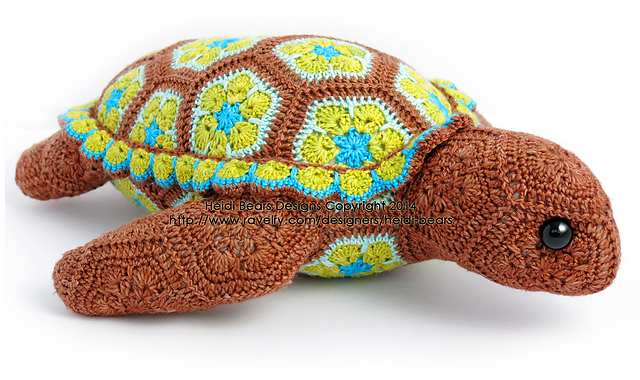
Thank you very much! I have a string of designs all worked out and ready to write up…the problem is the pattern writing takes a tremendous amount of time. I take around 500 photographs for each pattern that I write. I then edit the best ones for colour, focus, composition etc. I then annotate each one. Then I start the actual pattern writing, which also takes a lot of time, so the write-up is essentially the delaying factor.
I am currently writing up the pattern for what I think will be a very popular animal and have also test crocheted two completely new and different bear patterns. I love bears! Everyone loves bears! I had read a comment by someone that a bear is a bear is a bear… this couldn’t be further from the truth! It’s like saying “a human is a human is a human… they all have two arms, two legs and a head…” Obviously people are incredibly different despite having the same basic anatomy, and bears are no different. These bears (plus two other totally different bears which will follow) will be focused on making what would traditionally be called an “artist bear”. The regular crocheted and knitted bears have been seen by some as the “humbler cousin” …something I really want to change. The cleverness of the first two designs is that they are self-shaping. I have purposely created them in such a way that they have a little hump (as bears do), they have fat tummies and shaped limbs…all of which is achieved by simply constructing the bear as directed. The patterns will have a whole section devoted to finishing techniques, which will allow the bear maker to create something unique and of artistic quality. Yes, of course it may just be for a grandchild, but it will be the best bear anyway!
I also have plans to release my first shawl pattern this year. It’s for a really unusual geometric pattern that creates a shallowish triangular shawl. I am very excited about it and have started dyeing and testing up yarns and yarn combinations for it… also there is a secret line of new toys that is in the process of being created. This is something I am sooooo looking forward to seeing as it’s a totally different take on my current line….
Thank you so much for joining us, Heidi! Be sure to check out all of Heidi’s amazing designs on her Blog & Pattern Shop!
All photos courtesy of Heidi, unless otherwise specified.
